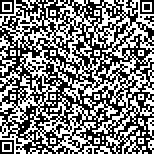| 引用本文: | 栗志民,刘志刚,梁春桥,彭海龙,宋慧歌,秦艳平,雷度运.广东流沙湾近岸和离岸育珠海区养殖环境的调查[J].海洋科学,2014,38(2):63-70. |
| |
|
| |
|
|
|
|
| 摘要: |
| 2011 年2 月~2012 年1 月对广东流沙湾近岸和离岸育珠海区6 个航次11 个指标进行了调查。结果表明, 近岸和离岸育珠海区水温、透明度、盐度和pH 周年变化范围相似, 水温呈现明显季节性变化,透明度、盐度和pH 周年比较稳定, 揭示目前流沙湾近岸和离岸育珠海区水流交换较好。近岸和离岸育珠海区叶绿素a 和浮游植物细胞密度具有类似的周年变化规律, 夏秋季高于冬春季。在4~7 月份和9~10月份, 近岸海区叶绿素a 和浮游植物细胞密度呈现显著递增趋势, 而10 月份之后, 显著递减。2~4 月份, 以及12 月份至次年1 月份, 叶绿素a 值和浮游植物细胞密度均较低。5~11 月份, 离岸海区叶绿素a 和浮游植物细胞密度均显著低于近岸海区。近岸和离岸育珠海区COD 含量周年变化范围分别为0.2~0.7 mg/L 和0.1~0.8 mg/L, 均达到国家一类水质标准。近岸海区和离岸海区无机氮( inorganic nitrogen,IN)含量周年变化范围分别为1.9~8.0 μmol/L 和3.4~8.7 μmol/L, 均达到国家第二类水质标准。两个海区IN 含量的周年变化趋势与叶绿素a 值和浮游植物细胞密度的周年变化趋势相反, 冬春季高于夏秋季。无机磷(inorganic phosphorus, IP)在流沙湾近岸和离岸海区含量具有相似的周年变化趋势, 其季节性变化与无机氮恰好相反, 表现为夏、秋季含量高于冬、春季。6~8 月份, 近岸海区IP 超出国家二类水质标准分别达44.67%、96.33%和210%, 离岸海区在相同的月份超出国家二类标准分别达75.67%、86%和230.67%。揭示在夏、秋季节应合理控制贝类养殖密度和流沙湾周边环境的污染。 |
| 关键词: 流沙湾 近岸海区 离岸海区 养殖环境 水质分析 |
| DOI:10.11759/hykx20130506004 |
| 分类号: |
| 基金项目:广东省科技计划项目(2010B020201014, 2011GA780001,2009B020415015); 广东省海洋渔业科技推广专项(A200908E05,A201008A01); 广东省教育厅项目(GCZX-A0909) |
|
| Investigation of culture environment in inshore and offshore pearl-cultivating sea areas of Liusha bay |
|
|
| Abstract: |
| In this paper, 11 factors including water temperature, transparency, salinity, pH, chlorophyll a, phytoplankton cell density, COD, D, NH4+ -N, NO3- -N, NO2- -N and PO43- -P in inshore and offshore pearl-cultivating areas of Liusha bay in Guangdong from Feb. 2011 to Jan. 2012 were surveyed. The results showed that the annual variation ranges of water temperature, transparency, salinity and pH were similar. Water temperature exhibited significant seasonal variations, and transparency, salinity and pH were stable in anniversary, which revealed that water exchange in inshore and offshore pearl-cultivating sea areas of Liusha bay was better at present. Chl-a and phytoplankton cell density have similar annual variation, with a higher value in summer and autumn than in winter and spring. From April to July, and from September to October, the chl-a and phytoplankton cell density showed a significant increasing trend, which significantly decreased after October. From Feb. to Apr. and from Dec. to next Jan, the chl-a and phytoplankton cell density were quite low. In addition, the chl-a and phytoplankton cell density in offshore sea areas were significantly lower than in inshore sea areas from May to November. The annual variation ranges of COD content in the inshore and offshore sea areas were 0.2-0.7 and 0.1-0.8 mg/L, respectively, reaching the first class water quality standard of the nation. The annual variation ranges of IN content in inshore and offshore sea areas were 1.9-8.0 and 3.4 -8.7 μmol·dm-3 respectively, both reaching the second class water quality standard of the nation. The IN content in inshore and offshore sea areas in winter and spring is higher than summer and autumn, which was opposite to the annual variation trend of chl-a and phytoplankton cell density. The IP content exhibited a similar annual variation in inshore and offshore sea areas, which was opposite to seasonal variation trend of IN, with a higher value in summer and autumn than in winter and spring. From June to August, the IP content in the inshore sea area beyond the second class water quality standard of the nation was up to 44.67%, 96.33% and 210%, respectively, and the IP content in the offshore sea area beyond the second class water quality standard of the nation was up to 75.67%, 86% and 230.67%, respectively, which revealed that breeding density of shellfish and surrounding environment pollution should be reasonably controlled in summer and autumn. |
| Key words: Liusha bay Inshore sea areas Offshore sea areas Culture environment Water quality analysis |
|
|
|
|
|
|
